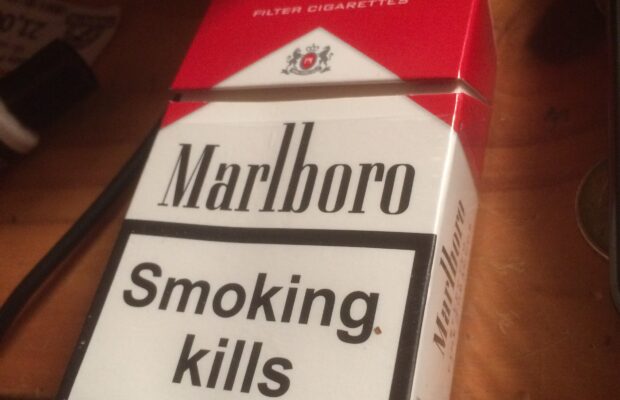The United States is the country of rights, liberties, and patriotic citizens. As a result, American history is teeming with civil disobedience and those who fight for civil rights. From women’s suffrage to the civil rights movement, the country is constantly changing. Today, many young adults feel entitled to drink and smoke when they turn 18. Since the legislation regulating these actions for those under 21 is relatively new, the laws are still vulnerable to a strong argument and an exceptional lawyer. However, it will be very difficult to argue against data and facts.
It’s somewhat amusing that 18-year-old people often complain about the drinking and smoking age. Two is a relatively small number compared to the 63 other things, such as voting or purchasing a rifle, kids can do when they turn 18. Instead of being grateful for all the actions the government trusts them to make at 18, they focus on the two decisions that the government doesn’t legally permit. They also tend to overlook the reasons behind these rulings.
More often than not, the government makes decisions to benefit the American people. The ruling to outlaw both tobacco products and alcohol at the federal level is based entirely on science. The National Academy of Medicine estimated that “Tobacco 21,” the bill outlawing the use of tobacco products for those under 21, would save 230,000 deaths from those born between 2000 and 2019. This included reducing the number of lung cancer deaths by 50,000.
Psychology teacher Mrs. Stephanie Hartnedy said, “Tobacco contains nicotine, which, like alcohol, is able to cross the blood-brain barrier; only faster. Within seven seconds, nicotine makes it to the central nervous system (brain and spinal cord) and releases certain neurotransmitters that have various effects on the brain and body. In the short term, some of these can be highly rewarding (diminishing appetite, temporarily calming anxiety, boosting alertness, reducing sensitivity to pain).
“Nicotine users will build up tolerance to the pleasurable effects of this drug, meaning that it takes more and more of the nicotine to achieve the same effects,” said Mrs. Hartnedy. “On the negative side, withdrawal symptoms that occur when users try to cut back or quit are quite uncomfortable, driving them to continue or increase usage. Long term use results in even more negative effects: smokers live on average 10 years shorter than non-smokers. Smoking has been found to cause lung disease and various cancers and is correlated with depression.”
The same goes for alcohol. According to the CDC, since the Federal Government moved the drinking age to 21 in 1984, the number of motor crashes has decreased by 16%. Today, 3600 kids under 21 die from alcohol-related injuries per year in the U.S.. Underage drinking has also cost the government a total of $53 billion dollars stemming from violent crime, traffic fatalities, and other behavior detrimental to American youth.
There are also many negative health effects of drinking underage. Mrs. Hartney said, “Alcohol is considered by scientists to be a neurotoxin–a brain poison. In under two minutes, alcohol is able to affect every system in the human body, including crossing the blood-brain barrier into the brain. The blood-brain barrier is designed to protect the brain from harmful influences, but alcohol is able to cross this barrier swiftly. Alcohol is a central nervous system depressant, meaning that it acts on the neurons of the brain and spinal cord to slow neural activity. Alcohol slows neural processing (impairing our judgment, decision making, social filter, and reaction time), disrupts memory formation, and reduces self-awareness.
“Heavy drinking, in particular heavy drinking after moderate drinking, intensifies alcohol’s effects, even to the point of depressing the vomiting response such that the person overdoses due to the inability to vomit out the toxin,” she said. “Loss of consciousness can occur as blood pressure drops and blood vessels widen with each drink, and the body is unable to pump fresh blood to the brain in a timely manner. If a person is not easily awakened upon passing out, he needs immediate medical attention for alcohol poisoning, especially if there are any of the following signs: vomiting, confusion, seizures, pale/bluish skin, slowed breathing, low body temperature. In the brain, alcohol destroys both gray matter (cell bodies of neurons) and white matter (myelinated axons), resulting in a decreased brain volume observable in brain scans. Another negative effect of alcohol use is organ damage to the liver, pancreas, and heart (besides the brain and nervous system).”
Young adults and kids are even more endangered by these substances. Mrs. Hartnedy said, “Alcohol and tobacco are both neurotoxins and should never be introduced to the premature brain. This is why doctors advise women not to smoke or drink during pregnancy: the baby receives anything that is in the mother’s blood. While the brain is forming, it must be protected if it is to develop properly, so to introduce alcohol or nicotine is to arrest that development.
“Fetal Alcohol Syndrome is one such developmental disorder that results from maternal alcohol consumption,” said Mrs. Hartnedy. “FAS causes growth problems and brain damage that is irreversible. Fetal Nicotine Syndrome includes damage to the brain and lungs, endocrine system, causing the baby to have hyperactive autonomic system responses in the first several weeks after birth, and includes the cravings as well as the withdrawal symptoms that the mother also experienced.
“The brain is not fully developed until age 25-26, so even the brains of adolescents can be considered somewhat premature,” said Mrs. Hartnedy. “The frontal lobes (responsible for decision-making, judgment, social filtering, planning, organizing, initiating, self-monitoring, etc.) are still developing in teenagers, so introducing a neurotoxin in this time period affects development in these areas in particular.”
Some young adults are not scared of the negative effects alcohol or tobacco could have on them. “I see it all the time,” said the anonymous source under the fake name Gary Bichario. “Both [tobacco/nicotine and alcohol] are at almost every party I’ve been to. So many kids use them because they want to fit in. I think that they know what risks they are taking, but they don’t seem to care.”
Bichario has also witnessed addition on a personal level. “I know a girl who is currently addicted to nicotine and probably alcohol too. It’s even worse to see it happen to her because she can’t stop even if she wants too. I’m hoping she goes to get help because her addictions could ruin her future.”
On a positive note, the future is bright for those who have used alcohol or tobacco products in high school. Today, there is more research and help than ever, and kids can seek help nearly everywhere they go. Mrs. Hartnedy said, “There are options: nicotine replacement drugs in the form of patches, gums, etc are available. A counselor or support group can help with motivation and accountability. Quitting gradually or going “cold turkey” (quitting all at once) have equal effects, so choose the method that fits your personality or willpower. The acute cravings and withdrawal symptoms will gradually decrease by 6 months, and 90% of people who make it to 1 year without smoking are able to stay off nicotine.”










